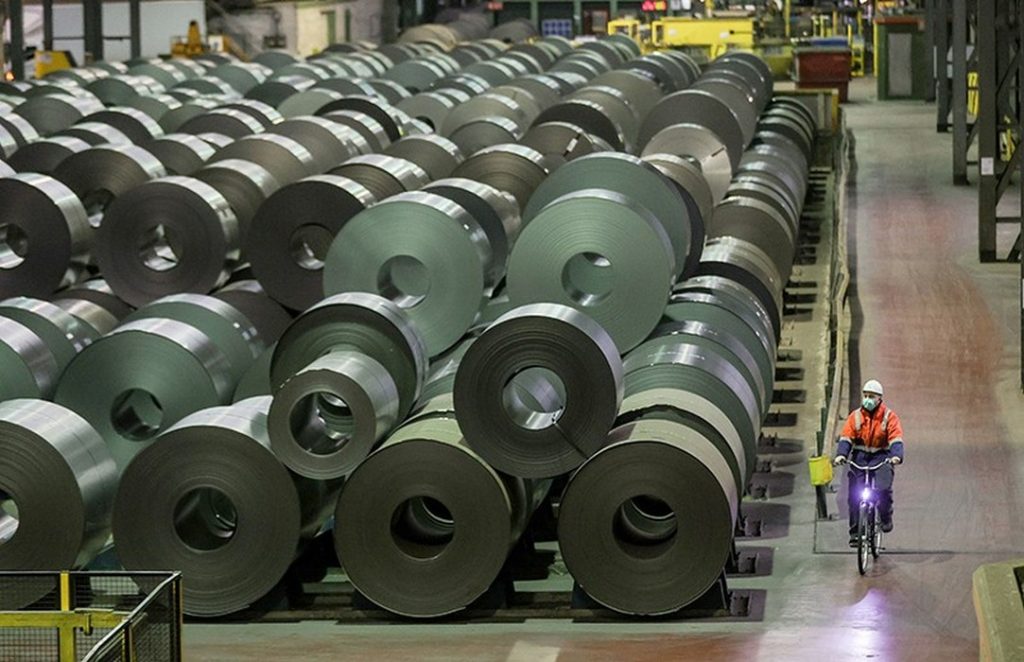Cement and steel are essential ingredients of buildings, cars, dams, bridges and skyscrapers. But these industries are among the dirtiest on the planet. Production of cement creates 2.3 billion tonnes of carbon dioxide per year, and making iron and steel releases some 2.6 billion tonnes — or 6.5% and 7.0% of global CO2 emissions, respectively.
That’s in part owing to the large quantities in which these materials are used: concrete is the second-most-consumed product on the planet, after clean water. It’s also thanks to their carbon-intensive methods of production. The chemical reactions involved give off CO2, as does burning fossil fuels to deliver the extreme temperatures required in the manufacturing processes.
Cleaner ways of making and using cement and steel are urgently needed. The world must reach net-zero carbon emissions by 2050, even as industrial demand is growing and energy prices are spiking. Infrastructure, technology transfer and mechanisms for reducing financial risks must be established to allow low-emissions heavy industry to flourish.
Here, we highlight nine priorities for research and action. Steel manufacturing processes need a rethink; cement’s biggest gains will require carbon capture and storage (CCS). Together, these steps could take steel close to being carbon neutral and cement to becoming a carbon sink.
Use the latest technologies
Ensuring that production plants are fitted with the best available technology offers immediate gains. Improving insulation of industrial plants can save 26% of the energy used; better boilers cut energy needs by up to 10%; and use of heat exchangers can decrease the power demands of the refining process by 25%2. Old, inefficient plants are usually out-competed by more modern facilities, so industries become more efficient over time. However, gains diminish as industries mature and improvements become incremental. Today, the most efficient cement plants can squeeze only 0.04% of energy savings per year by upgrading technologies3. More needs to be done.
Use less
Smaller quantities of steel and cement can be used for the same job. Today, the world produces 530 kilograms of cement and 240 kilograms of steel per person per year. Small but significant changes to building codes and education for architects, engineers and contractors could reduce demand for cement by up to 26% and for steel by 24%, according to the International Energy Agency4. Many building codes rely on over-engineering for safety’s sake. That margin could be limited by using modern materials and computer modelling to whittle down designs to use only the necessary amount of resources. Alternative materials with a smaller carbon footprint for a given use, such as aluminium, might replace steel in some products, including cars. Professionals would have to shift their practices and re-train.
Reinvent steel production
Carbon is at the core of conventional steel production. Coke (derived from coal) fuels blast furnaces in which iron ores are chemically reduced to metallic iron at temperatures of up to 2,300 °C. Coke burns to produce carbon monoxide, which reduces the ore to iron and CO2. Molten iron is then refined into steel, usually in a coal-fired furnace, but sometimes (especially when recycling scrap) in an electric arc furnace (EAF). The process emits about 1,800 kilograms of CO2 or more per tonne of steel.
Microsoft’s million-tonne CO2-removal purchase — lessons for net zero
Other substances can be used to reduce the ores. About 5% of the world’s steel is already made through ‘direct reduced iron’ (DRI) processes that don’t require coke and typically use hydrogen and CO (derived from methane or coal). By using methane-derived gas and renewable electricity to power an electric furnace, such steel plants emit about 700 kilograms of CO2 per tonne of steel5 — 61% less than coke-based ones.
Better still, using only hydrogen for DRI should reduce CO2 emissions to 50 kilograms or less per tonne of steel — a 97% reduction. Firms in Europe, China and Australia are piloting such plants, with several slated to open in 2025 or 2026. The challenge is that this process requires a lot of hydrogen.
Producing all steel this way would mean almost tripling global hydrogen production, from 60 to around 135 million tonnes annually. And most cheap hydrogen today comes from natural gas, which releases CO2. A greener option — splitting water with electrolysers — is around 2.5 times as expensive. Costs should come down as more plants are built.
Source: https://www.nature.com/
Tags: Cement, CO2 Emissions, Fossil Fuels, NetZero, Steel



Recent Posts
Seafarer Wellbeing Highlighted in New Decarbonisation Guidance from ISWAN
India Outlines Green Hydrogen Strategy at World Hydrogen Summit 2025 in Rotterdam
Port of Rotterdam and EDGE Navigation Partner to Advance Liquid Hydrogen Infrastructure
Finnlines Launches Low-Carbon “Green Lane” Sea Transport Service with Up to 90% Emission Cuts
Microsoft Teams Up with NORDEN to Cut Maritime Supply Chain Emissions
Höegh Autoliners’ Fifth Aurora-Class PCTC Enters Service with Multi-Fuel Capability
Next-Gen Marine Propulsion: MAN Launches Methanol Super Engine
Port of Amsterdam Marks First Ship-to-Ship Methanol Bunkering